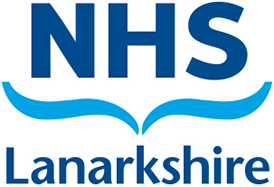Musculoskeletal (MSK) Foot and Ankle
There are a number of areas within the foot and ankle where pain can develop. Musculoskeletal (MSK) treatment is an area of Podiatry that focuses on identifying, managing and treating this. With the foot and ankle carrying our entire body weight, bones, muscles, ligaments and nerves can become uncomfortable or painful.
Foot and ankle problems can come and go without any prescribed treatment, and/or can respond well to self-treatment for most people.
Our self-help tool provides evidence-based advice to support your recovery and to help you understand your condition. If you have followed and completed the recommended online self-help information, you can contact your local Podiatry department if you are still experiencing problems.
What causes Foot/Ankle problems?
- Trauma
- Tripping/Falling
- Going over on your ankle
- Osteoarthritis
- Inflammatory conditions (i.e. Rheumatoid Arthritis)
- Muscle weakness
- Footwear
Musculoskeletal Foot/Ankle problems can cause a range of symptoms, including:
- Pain
- Swelling
- Stiffness
Most people can manage their problems and improve their symptoms, or recover within 8-12 weeks when following the self-help advice.
Common foot problems
The images below have been designed to help you to identify problem areas and direct you to the relevant page with more information.
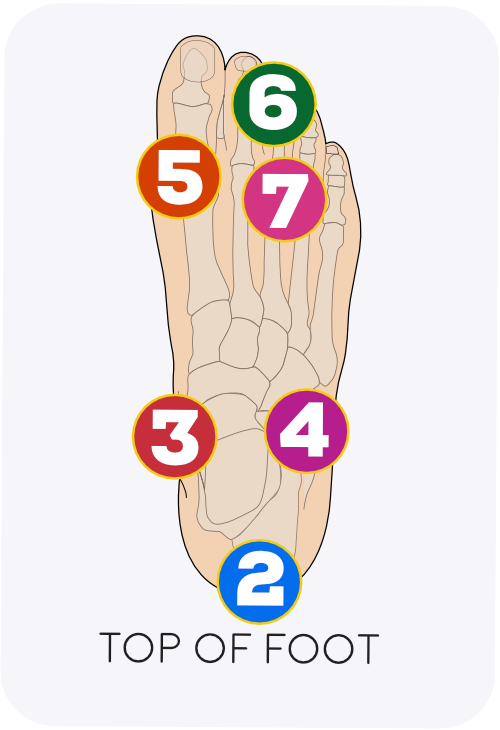
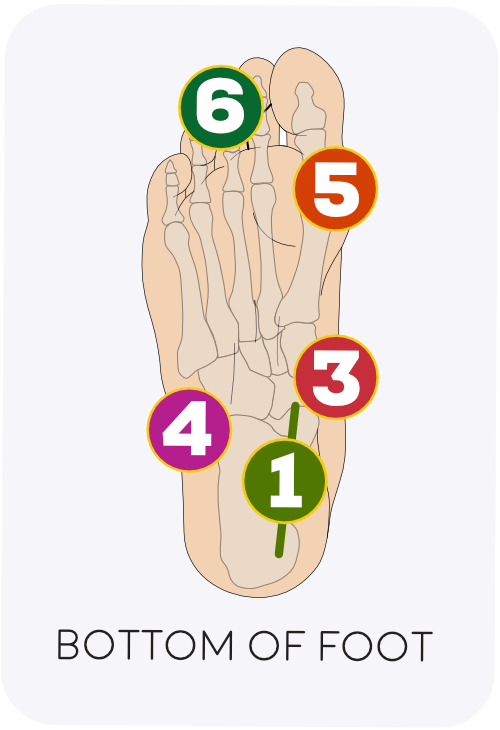
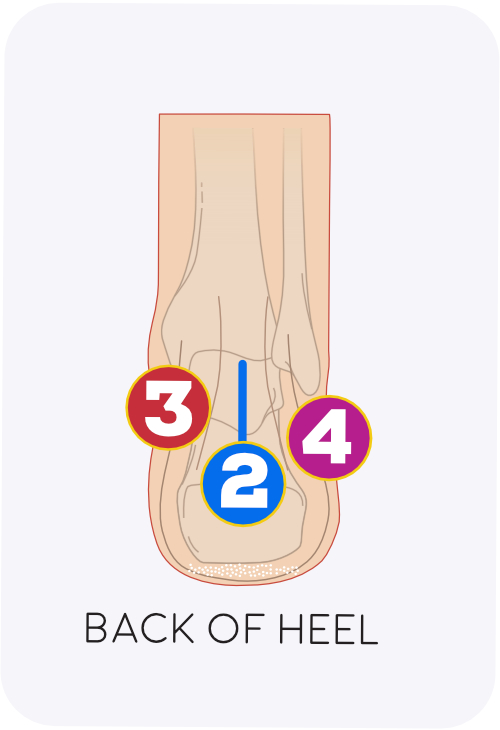
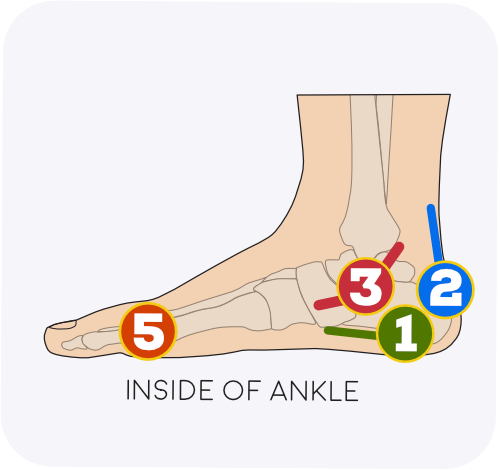
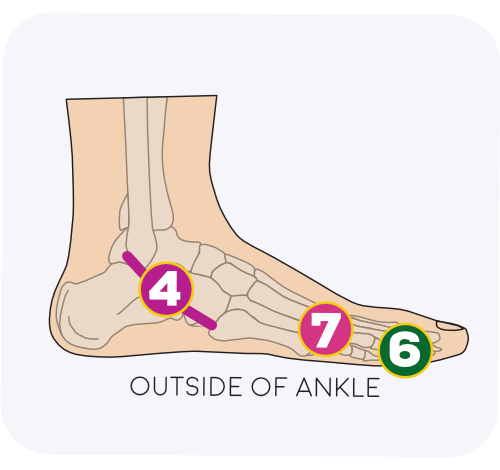
1. Heel Pain
Coming soon
2. Back of Heel Pain
Coming soon
3. Arch Pain or inside Ankle Pain
Coming soon
4. Outside Ankle Pain
Coming soon
5. Big Toe Pain
Coming soon
6. Smaller Toes Pain
Coming soon
7. Burning Pain
Coming soon
Footwear
Coming soon
General self-help advice
Keeping active is essential to your recovery and to maintain your current levels of fitness and keep your muscles and joints strong and flexible. You may have to modify what and how you would normally carry out activities depending on the pain you experience, but some activity is better than no activity.
Hopefully, you would remain at work or return to work as quickly as possible during your recovery. You do not need to be pain or symptom-free to return to work or activity.
Physical activity for adults and older adults
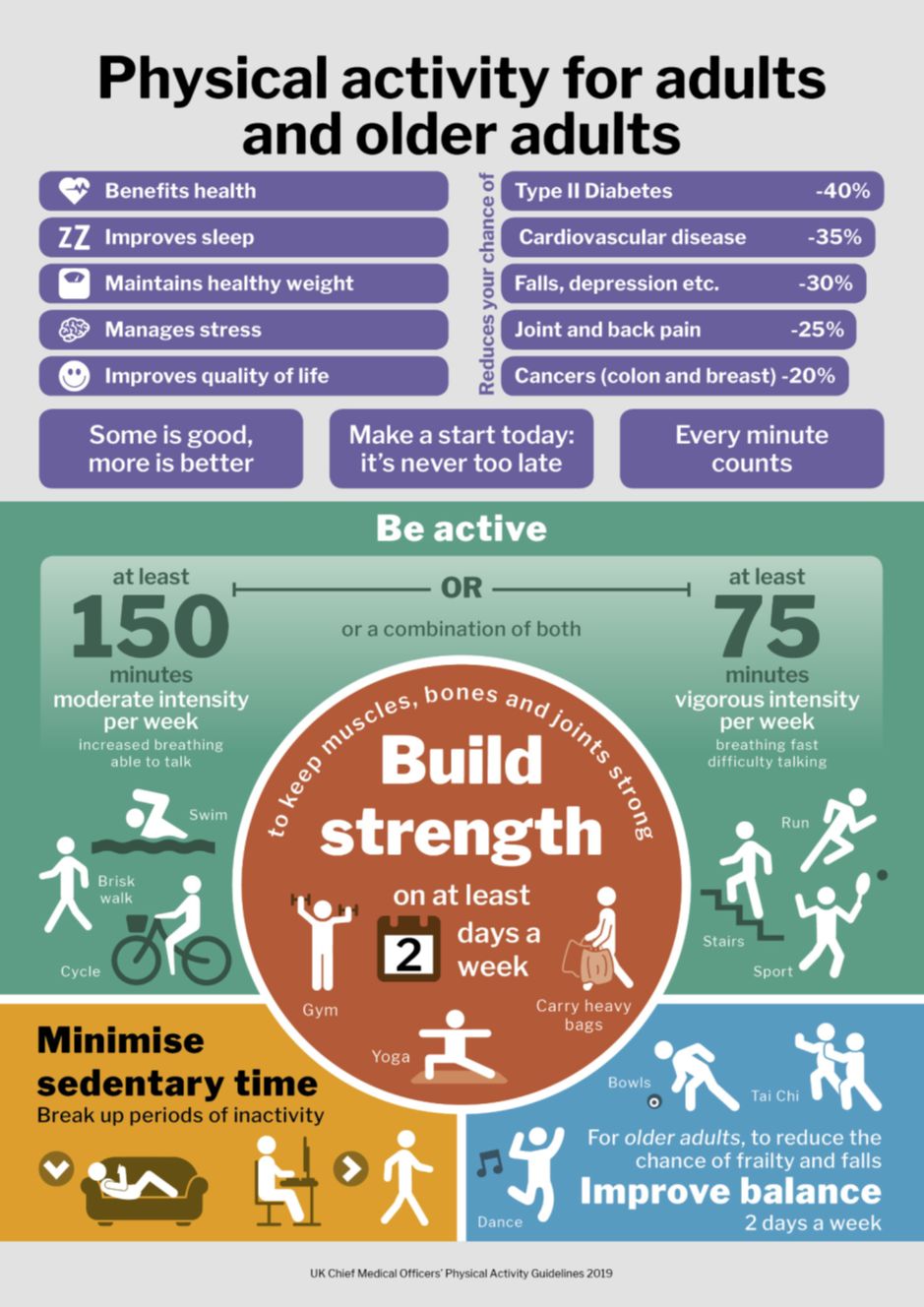
Weight management
Increased weight will place extra stress on the joints and soft tissues in your feet. Losing even a small amount of weight will make a big difference to this especially when walking, running, or going up and downstairs.
If you need help with weight control, you can find information, advice and groups you can join to help you manage your weight better. Use the NHS BMI Calculator to guide you on whether you should consider weight management.
Pain management
Pain medication can help reduce your symptoms, allow you to move more comfortably which will aid your recovery. Your community Pharmacist can provide guidance on specific medication or other methods of pain relief (always read the label and manufacturer’s guidelines).
For more information, please visit the Chronic Pain webpage.
Resting or moving?
The P.O.L.I.C.E guidelines describe what you should do for the first 24 to 48 hours after suffering a mild sprain, strain or sports injury.
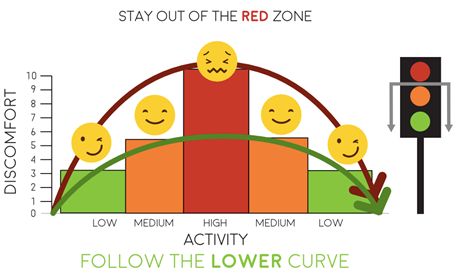
- wrap crushed ice in a damp towel
- hold it for 20 minutes against the part of your body that hurts. Make sure you use a damp towel between the ice and the skin to avoid ice burn.
Alternatively, you could try sports sprays and gel/cool packs, which do a similar job. You can do this every two to three hours.
Should I use a heat pad? After two days, you may find that heat is more relaxing. You could use a heat pad or a hot water bottle with an insulated cover on it. Make sure this is not too hot and is not directly touching your skin. You should do this three to four times a day for 10 to 15 minutes.
Don’t make the bandage too tight and do not wear tubi-grip or any compression bandage in bed at night.
After 48 hours:
-
- Try to weight-bear more, loading with a limp is generally normal in this phase, exercise can help relieve pain.
- Do whatever you normally would and remain at work, or return to work.
- Avoid sports or heavy lifting until you have less discomfort and improved movement.
How to self refer
If, after following the above advice, your Foot/ Ankle problem hasn’t improved with 8-12 weeks, you may want to refer yourself to the Podiatry department.
A self-referral can be made in person at your local Health Centre or by completing the following referral form and emailing it to PodiatryMSK@lanarkshire.scot.nhs.uk.
Speak to a health professional urgently if any of the following applies:
If any of the below applies we would recommend contacting your local Podiatry department for further advice on the number below.
- There has been significant injury/ trauma, for example a fall from height or direct blow.
- Your Foot/Ankle has progressive changes to its shape/ appearance.
- Lower leg is hot, swollen and tender and you have a fever
- Involves ulceration/ impairment of blood flow/ changing in the colour of your skin
- Difficulty putting weight through your lower leg
- Pain is increasing
- Unexplained bruising/ lumps/ bumps
- Loss of sensation or movement
- Unexplained bone pain, pain at night or at rest
- History of Charcot foot (a condition causing weakening of the bones in the foot that can occur in people who have significant nerve damage)
- People with neuropathy and significant foot deformity
- People with peripheral arterial disease
- People with inflammatory/ rheumatic diseases, or connective tissue disorders
- Severe foot deformities with a long-term condition and or pain that may require surgery
- Paediatrics (Children)
- History of cancer
- History of falls
Once we receive your referral
Your Podiatrist will offer you an appointment within one of our NHS Lanarkshire MSK Clinic locations if you need a physical examination or treatment.
During your appointment your Podiatrist will take a full history and utilize a variety of tests depending on your symptoms, these may include sitting and standing assessments, looking at muscle strength and joint function with an appreciation of how the whole lower limb interacts with the foot and ankle. Following this, a view of your walking or gait pattern may be recorded.
In some instances, the use of imaging techniques such as x-ray, ultrasound and MRI may be requested.
At the end of your assessment, a care plan will be agreed and your GP will be informed of the diagnosis and planned interventions.
Treatment options available for your MSK symptoms include:
- Off-the-shelf and custom made Orthoses
- Taping
- Stretching
- Strengthening
- Acupuncture
- Low-level laser
- Steroid injections
Education, research and clinical practice
If you would prefer students not to be present during your consultation, carry out your treatment (under supervision), please let your Podiatrist know.
We appreciate your willingness to help with the important task of training our Health care Professionals of the Future.
MSK podiatry treatment centres
North West
Abronhill Health Centre
15 Pine Road,
Cumbernauld,
G67 3BE
Tel: 01236 723223
Airdrie Community Health Clinic
88 Graham Street,
Airdrie,
ML6 6DB
Tel: 01236 772271
Townhead Health Centre
Lomond Road,
Coatbridge,
ML5 2JN
Tel: 01236 423751
North East
Bellshill Community Health Centre
Greenmoss Place,
Bellshill,
ML4 1PS
Tel: 01698 575700
Houldsworth Centre
Kenilworth Avenue,
Wishaw,
ML2 7BQ
Tel: 01698 355511
Motherwell Health Centre
138-144 Windmillhill Street,
Motherwell,
ML1 1TA
Tel: 01698 242613
South West
Hunter Health Centre
Andrew Street,
East Kilbride G74 1AD
Tel: 01355 234325
Rutherglen Primary Care Centre
130 Stonelaw Road,
Rutherglen,
G73 2PQ
Tel: 0141 531 6000
South East
Douglas Street Community Health Clinic
19 Douglas Street,
Hamilton ML3 0BP
Tel: 01698 368700
Lanark Health Centre
Woodstock Road,
Lanark,
ML11 7DH
Tel: 01555 667150
Your Feedback – comments, concerns and complaints
NHS Lanarkshire is committed to improving the service it provides to patients and their families. We therefore want to hear from you about your experience. If you would like to tell us about this please visit our feedback page.
